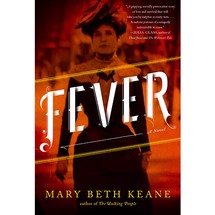There are some lives too complex to remain a footnote in history, and as Mary Beth Keane proves with her intriguing second novel, Typhoid Mary was one of them—the woman so roundly reviled to this day for supposedly spreading typhoid fever during the epidemic of the early 1900s. The real Mary Mallon, however, was an Irish immigrant supporting herself in New York with her talent for cooking. In Keane's assured hands, she becomes a sympathetic, complex and even inspiring character. Yes, Mary Mallon had noticed that many members of the upper-class families she cooked for fell ill with fevers, but "the old country was full of death ... People in America died too ... It was just a sneakier death, a crueler death, in a way, because it always seemed to come by surprise." Never does Mary suspect that she might be carrying the contagion that has been killing the people nearest her. But in 1907, a medical engineer looking to make a name for himself suggests to the New York City Health Department that Mary, though herself immune, may be passing typhus to people through their food. Mary is quarantined (or, in her mind, incarcerated) on the otherworldly North Brother Island. Keane's portrait is at once sympathetic and unsentimental; the rocky relationship between Mary and her on-again off-again beau Alfred is particularly well drawn. Not only is
Fever a compelling read for anyone who gets drawn into medical mystery shows, it will also send shivers through anyone who's ever felt the ill effects of gossip or hypocrisy. But, as Mary herself says, "every part of life feels strange, and every part of life feels inevitable."


